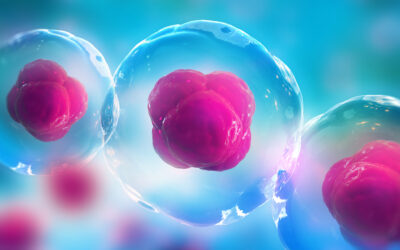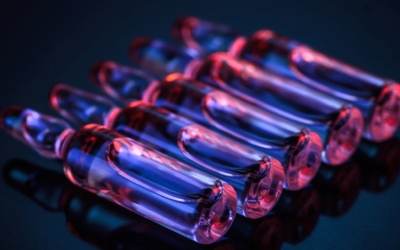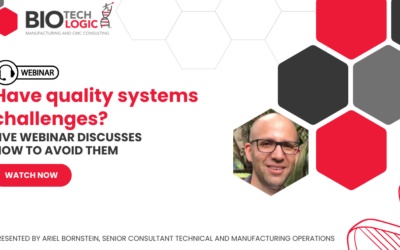Contact Surface and Hand Disinfection – Applying Pharma’s Disinfectant Efficacy Concepts for COVID-19

By Tracy TreDenick-Fricke, BioTechLogic, Head of Regulatory and Quality, and Senior Consultant
Most of us now understand that SARS-CoV-2 (the cause of COVID-19) is often transmitted via respiratory droplets. However, SARS-CoV-2 is also spread by contaminated contact surfaces and hands, but all contact surfaces are not created equally. A chart published by the Journal of Hospital Infection is quite helpful for understanding the persistence of the virus on various surfaces.
Due to the nature of its business, the biopharmaceutical industry well understands the ins and outs of disinfecting procedures. But what does the industry do when a new pathogen comes along, and how can this knowledge be shared with the public to help keep us all safe during the COVID-19 crisis?
As professionals across many industries know, the EPA approves a range of disinfectants for various usages, and approved claims are permitted to be made on product packaging. From a consumer perspective, you have noticed claims such as, “Kills 99.9% of bacteria in 15 seconds. This product kills Staphylococcus aureus, salmonella enterica, influenza type A virus…” The label will also include EPA registration numbers and active ingredients. The product’s active ingredient composition has been tested and approved for their given applications.
But what happens when a new pathogen bursts onto the scene such as SARS-CoV-2? Emerging viral pathogens claims are filed, but what are emerging pathogens? The National Institute of Allergy and Infectious Diseases defines emerging infectious diseases/pathogens as those “that have newly appeared in a population or have existed but are rapidly increasing in incidence or geographic range.” Many of the emerging pathogens of most significant concern are pathogenic viruses, and the ability of some of these viruses to persist on environmental surfaces can play a role in human disease transmission. SARS-CoV-2 is such a pathogenic virus.
While there is generally not the time for the testing required for typical EPA registration numbers, emerging viral pathogens claims for SARS-CoV-2 are expected to be effective based on:
- Demonstrated efficacy against a harder-to-kill virus;
- Qualified for the emerging viral pathogens claim; or
- Demonstrated efficacy against another human coronavirus similar to SARS-CoV-2.
What does this mean for our fight against SARS-CoV-2? You can find the full list of products on EPA’s List N, which are disinfectants for use against SARS-CoV-2. This list includes the active ingredients of the product, EPA registration number, product name, product manufacturer or distributor, formulation type (for example, dilutable, ready to use or wipe), and the contact time the surface should remain wet for the product to be effective. However, the following is a quick primer.
Which active ingredients are most common in successful emerging viral pathogens claims for SARS-CoV-2?
- Sodium hypochlorite (bleach)
- Quaternary ammonium
- Hydrogen peroxide
- Alcohols including Isopropanol and ethanol
- Alkyl dimethyl benzyl ammonium chloride
Effective Concentrations of Active Ingredients
SARS-CoV-2 is an enveloped virus. This chart outlines the concentrations of disinfectants needed to disable SARS-CoV-2 effectively. Ideally, you want all ‘yes’ for enveloped (SAR-CoV-2) and non-enveloped columns for an agent to be most effective.
Product Contact Time
Product contact time is the time that the given surface should remain wet with the product to ensure disinfection efficacy. Generally, the shorter the required contact time, the better.
Accessible Cleaning Products
The following is a shortlist of products that are suitable for inactivating the SARA-CoV-2 virus. While this is far from a complete list, we sought to include off-the-shelf products that tend to be accessible either in stores or online. We also included a list of common household products and their needed concentrations in the event that you find yourself needing to make your own solutions. To decontaminate a surface, you can’t just swipe it, you need to scrub it, ensure the entire surface is wet (and remains wet) for the required contact time, and then let the surface dry on its own.
Common Household Products
| Product Name | Active Ingredient | Contact Time (SARS-CoV-2) | Product Form | Comments |
| 0.5% Bleach product | Sodium hypochlorite | 1 minute | Ready to use | 1 part bleach to 9 parts water (0.5 %) |
| 70% Alcohol product | Ethanol or Isopropanol | 30 sec to 1 minute | Ready to use | Don’t use pure alcohol as it evaporates too quickly. |
| Hydrogen Peroxide | Hydrogen Peroxide | 1 minute | Ready to use | 3% Hydrogen Peroxide Product |
Wipes
| Product Name | Active Ingredient | Contact Time (SARS-CoV-2) | Product Form | Comments |
| Discide Ultra Disinfecting Towelettes from Palmero Healthcare, LLC (1) | Quaternary ammonium; Isopropanol | 30 seconds | Wipe | Wear chemical-resistant gloves and protect eyes. |
| Clorox Disinfecting Wipes (Bleach free) | IPA and alkyl dimethyl benzyl ammonium chloride | 4 minutes | Wipe | Kills 99.9% of viruses & bacteria |
Specialized Disinfectants
| Product Name | Active Ingredient | Contact Time (SARS-CoV-2) | Product Form | Comments |
| Lysol Brand Disinfectant Direct Multi-Purpose Cleaner by Reckitt Benckiser | Quaternary ammonium | 2 minutes | Ready to use | This product is hard to come by. |
| Citrus Scent Lysol Brand Antibacterial Cleaner by Reckitt Benckiser | Quaternary ammonium | 2 minutes | Ready to use | This product is hard to come by. |
Products Suitable for Use on Hands
| Product Name | Active Ingredient | Contact Time (SARS-CoV-2) | Product Form |
| Soap and Water | Soap | 20 seconds of washing | Ready to use |
| PURELL Advanced Hand Sanitizer Refreshing Gel | 70% Ethyl Alcohol | 30 sec to 1 minute | Ready to use |
| 70% Alcohol products | Ethanol or Isopropanol | 30 sec to 1 minute | Ready to use |
Soap and Water (20 sec. scrub)
Why does soap work so well on the Sars-CoV-2 and most viruses? The weakest link in a virus is the lipid (fatty) bilayer. Soap dissolves the fat membrane, and the virus falls apart and becomes inactive.
Alcohol-based Hand Sanitizer
Products with 60 – 95% ethanol or isopropanol is used for hand sanitizing, but products with a concentration of 70% are recommended. For example, PURELL Advanced Hand Sanitizer Refreshing Gel contains a 70% concentration of ethyl alcohol.
We hope that this information has been helpful as you consider ways to clean and protect surfaces and hands, helping to keep us all safe from the Sars-CoV-2 virus.
Sources:
EPA List N: Disinfectants for Use Against SARS-CoV-2
Persistence of coronaviruses on inanimate surfaces and their inactivation with biocidal agents, The Journal of Hospital Infection
The Best Ways to Kill Coronavirus in Your Home, Rutgers Research & Innovation
Hand Sanitizer Alert, Journal of Emerging Infectious Diseases






